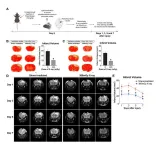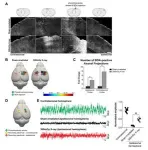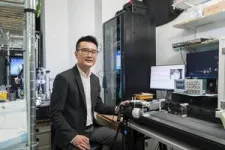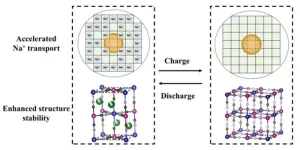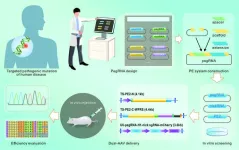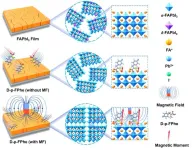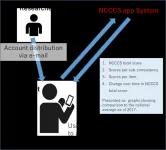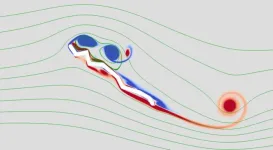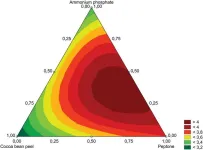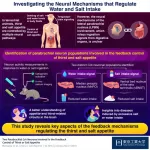(Press-News.org) Traumatic brain injury (TBI) and ischemic stroke are major public health concerns and leading causes of death and disability worldwide. A research team led by City University of Hong Kong (CityU) neuroscientists recently discovered that low-dose ionizing radiation (LDIR), such as X-ray irradiation, can reduce lesion size and reverse motor deficits in TBI and ischemic stroke mice, demonstrating that LDIR may be a promising therapeutic strategy for TBI and stroke patients.
Nearly half of TBI and stroke survivors experience lifelong motor impairment and disability. “Usually, secondary brain damage worsens over time after primary injuries in TBI (mechanical insults such as a car accident or falls by older adults) and strokes (when blood flow to the brain is blocked), owing to the unfavorable and hostile neuroinflammatory environment in the brain,” explained Professor Eddie Ma Chi-him, in the Department of Neuroscience at CityU, who led the research. “But there is still no effective treatment for repairing the central nervous system after brain injury.”
It has long been known that low-dose X-ray irradiation can enhance adaptive responses, including extending average life expectancy, stimulating the immune system, healing wounds and stimulating cell growth in animals as well as neuroprotection in animal model of neurodegenerative diseases, primarily due to immunomodulation. Based on these studies, Professor Ma and his team speculated that the immunomodulatory effects of LDIR could play a pivotal role in mitigating damage and promoting wound healing after brain injury.
In their recent study, they found that low-dose X-ray irradiation completely reversed the motor deficits in TBI and stroke mice and restored brain activity after stroke. More importantly, low-dose X-ray irradiation treatment delayed by eight hours was still effective in allowing a complete recovery of motor function after stroke, which is highly clinically relevant in the translation of the findings into clinical applications, since this is very likely to happen in the clinical setting, where hours could elapse before any treatment is available.
Mice were treated with whole-body X-ray irradiation after cortical stab wound injury or photothrombotic ischemic stroke, while the control mouse group received no (sham) irradiation. Seven days after cortical stab wound injury, the X-ray-irradiated mice exhibited a reduction in lesion size by 48%. The magnetic resonance imaging showed that X-ray irradiation significantly reduced the infarct volume of stroke mice by 43–51% during the first week after the induction of ischemic stroke. These results support a common clinical observation that stroke patients with smaller infarct volume usually have improved clinical outcomes.
Moreover, X-ray irradiation accelerated substantial motor function recovery detected by narrow bean walking, pole climbing and grip strength after cortical stab wound injury and ischemic stroke. For instance, X-ray-irradiated mice took a much shorter time to transverse a narrow beam, with fewer foot slips, indicating that X-ray-irradiated mice demonstrated excellent motor coordination and balance shortly after cortical stab wound injury and ischemic stroke.
The team also conducted systems-level transcriptomic analysis, which showed that genes upregulated in LDIR-treated stoke mice were enriched in pathways associated with inflammatory and immune responses involving microglia. LDIR induced upregulation of anti-inflammatory- and phagocytosis-related genes, and downregulation of key pro-inflammatory cytokine production. This suggests that LDIR treatment has a strong immunomodulatory effect by the expression of genes involved in inflammatory and immune responses.
More strikingly, their study demonstrated that the LDIR promoted axonal projections (brain rewiring) in the motor cortex and recovery of brain activity detected by electroencephalography recordings months after stroke. Even if the LDIR treatment was delayed by eight hours after the injury, it still maintained the full therapeutic effect on motor recovery.
“Our findings indicate that LDIR is a promising therapeutic strategy for TBI and stroke patients,” said Professor Ma. “X-ray irradiation equipment for medical use is commonly available in all major hospitals. We believe this strategy could be used to address unmet medical needs in accelerating motor function restoration within a limited therapeutic window after severe brain injury, like TBI and stroke, warranting further clinical studies for a potential treatment strategy for patients.”
The findings were published in Brain, Behavior, and Immunity under the title “Low-dose ionizing radiation promotes motor recovery and brain rewiring by resolving inflammatory response after brain injury and stroke”.
The first author is Dr Au Ngan-pan, a CityU PhD graduate and currently a lecturer at the University of Portsmouth. The corresponding author is Professor Ma. Other CityU collaborators include Professor Kannie Chan Wai-yan and Professor Peter Yu Kwan-ngok, and PhD students Wu Tan and Joseph Lai Ho-chi. The research was supported by the General Research Fund of the Research Grants Council, the Health and Medical Research Fund of the Food and Health Bureau of the Hong Kong SAR Government, and the Shenzhen Science, Technology and Innovation Commission.
https://www.cityu.edu.hk/research/stories/2024/01/26/cityu-neuroscientists-uncover-therapeutic-potential-low-dose-ionizing-radiation-traumatic-brain-injury-and-ischemic-stroke
END
CityU neuroscientists uncover the therapeutic potential of low-dose ionizing radiation for traumatic brain injury and ischemic stroke
2024-01-26
ELSE PRESS RELEASES FROM THIS DATE:
Alliance for Clinical Trials in Oncology study shows positive results for patients with muscle-invasive urothelial carcinoma
2024-01-26
Patients with muscle-invasive urothelial cancer and a high risk of recurrence after surgery may have a new treatment option. The Alliance for Clinical Trials in Oncology today announced positive results from the phase III AMBASSADOR (A031501) trial for the adjuvant treatment of patients with localized muscle-invasive urothelial carcinoma (MIUC) and locally advanced urothelial carcinoma. Late-breaking data from the trial are being presented during an oral abstract session at the 2024 American Society of Clinical ...
Neural network enables objective assessment of breast symmetry
2024-01-26
Waltham — January 25, 2024 — A newly developed neural network is highly accurate in identifying key landmarks important in breast surgery – opening the potential for objective assessment of breast symmetry, suggests a study in the February issue of Plastic and Reconstructive Surgery®, the official medical journal of the American Society of Plastic Surgeons (ASPS). The journal is published in the Lippincott portfolio by Wolters Kluwer.
"Neural networks and machine learning have the potential to improve evaluation of breast symmetry in reconstructive ...
Boosting the sodium storage performance of Prussian blue analogues via effective etching
2024-01-26
This study is led by Prof. Yuliang Cao and Prof. Yongjin Fang (College of Chemistry and Molecular Sciences, Wuhan University). The experiments were performed by using ammonia etching on highly crystalline Na2NiFe(CN)6 (denoted as NaNiHCF) to activate the sodium storage sites and accelerate the Na+ transport.
Fe(CN)6 vacancies and the water molecules in the lattice, which are concomitant during the synthesis, however, lead to poor electrochemical performance. Hence, optimizing the crystal structures of PBAs to boost their electrochemical performance is currently a hot spot in the research ...
Prime editing: Current advances and therapeutic opportunities in human diseases
2024-01-26
This study is led by Prof. Xianqun Fan (Department of Ophthalmology, Shanghai Jiao Tong University School of Medicine Affiliated Ninth People’s Hospital).
Gene editing ushers in a new era of disease treatment since many genetic diseases are caused by base-pair mutations in genomic DNA. With the rapid development of genome editing technology, novel editing tools such as base editing and prime editing have attracted public attention, heralding a great leap forward in this field.
Prime editing (PE) was proposed by David Liu’s team in 2019, which is characterized ...
Highly oriented perovskite films induced by chiral molecules under magnetic-field control
2024-01-26
In the realm of clean energy, metal halide perovskite solar cells (PSCs) have emerged as a groundbreaking focus, capturing significant attention for their extraordinary advancements. In just over a decade, their certified power conversion efficiency (PCE) has skyrocketed to 26.1%, approaching the upper limits seen in traditional crystalline silicon cells. What sets PSCs apart is their potential to surpass the 30% PCE threshold [1].
The key to optimizing solar devices lies in the deposition of high-quality perovskite films. Achieving minimal defect density and exceptional homogeneity becomes crucial for enhancing device performance. One commonly employed strategy involves introducing ...
Bioinspired hydrogel pattern enhancing atmospheric water harvesting via directional droplet steering
2024-01-26
This study, led by Prof. Jiuhui Qu, Dr. Qinghua Ji, and Dr. Wei Zhang from Tsinghua University, focuses on addressing water scarcity by exploring atmospheric water harvesting. The water in the air originates from both natural and forced evaporation, with condensation being the final and crucial step in water harvesting. Condensation involves nucleation, growth, and shedding of water droplets, which are then collected. However, uncontrollable growth of condensed droplets leading to surface flooding is a pressing challenge due to insufficient driving forces, posing a threat to sustainable condensation.
To expedite this process and achieve orderly ...
App enhances nurses' care coordination competency for critically ill patients
2024-01-26
To improve the care coordination competency of nurses involved in the management of critically ill patients on life support, an electronic app—NCCCS—was developed by Associate Professor Chie Takiguchi of Toho University and Professor Tomoko Inoue of International University of Health and Welfare.
The NCCCS app utilizes the scoring system referred to as the Nurses' Care Coordinate Competency Scale (NCCCS), developed by Dr. Takiguchi et al. in 2017, and it is currently being translated into Chinese, Italian, Polish, and Persian. This app offers immediate feedback to nurses caring for critically ill patients on life ...
Dragonfly wings used to study relationship between corrugated wing structure and vortex motions
2024-01-26
Scientists from Hiroshima University undertook a study of dragonfly wings in order to better understand the relationship between a corrugated wing structure and vortex motions. They discovered that corrugated wings exhibit larger lift than flat wings.
Their work was published in the journal Physical Review Fluids on December 7, 2023.
The researchers set out to determine if the corrugation of a dragonfly's wing is a secret ingredient for boosting lift. While past research has largely zoomed in ...
Peach-palm waste and Trichoderma stromaticum: The potential of Cost-effective amylase production
2024-01-26
Amylases are among the most important biotechnological and industrial enzymes that can be applied in various sectors, such as food, pharmaceuticals, textiles, chemicals, paper, and detergents.
The enzymes’ costs come from a range of factors including the quantity produced, the production process, the expense of its recovery, and the degree of purity at which it will be marketed, etc. The use of agro-industrial substrates and microorganisms brings the potential to low-cost enzyme production. Meanwhile, due to the ability to improve physical and chemical resistance to industrial environmental extremes, such as high temperature and pH, as well ...
Decoding how the brain manages the appetite for salt and water
2024-01-26
Staying hydrated and consuming appropriate amounts of salt is essential for the survival of terrestrial animals, including humans. The human brain has several regions constituting neural circuits that regulate thirst and salt appetite, in intriguing ways.
Previous studies suggested that water or salt ingestion quickly suppresses thirst and salt appetite before the digestive system absorbs the ingested substances, indicating the presence of sensing and feedback mechanisms in digestive organs that help real-time thirst and salt appetite modulation in response to drinking ...
